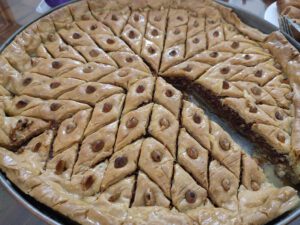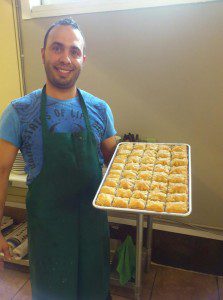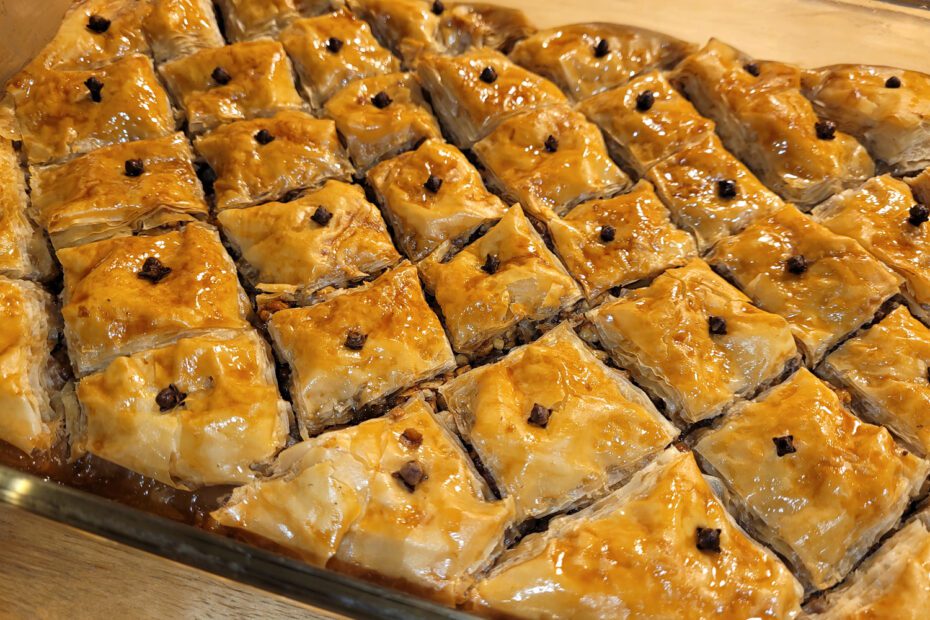Baklava: delicious everywhere
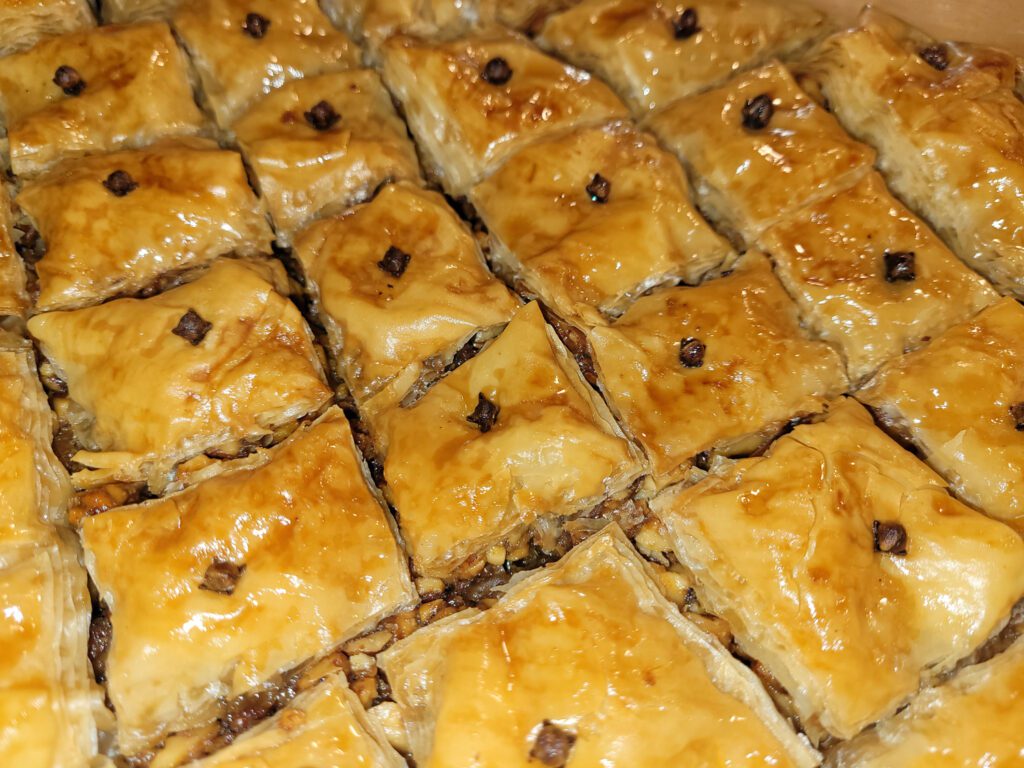
Baklava is high on the list of my favorite desserts. This delicious dessert is a bit spendy to make, is sold by the pound, and is served mostly on special occasions. One of my favourite tasks at family parties was unpacking the boxes form Olympia Bakery and eating the walnut crumbs from the box. Occasionally I would steal honey-soaked layers of dough from the bottom or center of some pieces where it would not be noticed as easily. Baklava is and has always been one of my favourite desserts.
Typically a Greek Baklava uses mostly or only honey syrup as a sweetener, where Turkish and most other Midde-Eastern baklava recipes will use a sugar syrup with little or no honey. Turkish baklava may be made using rose water to flavour the syrup, whereas Greek baklava tends more to lemon juice, although it is sometimes flavoured with orange blossom water.
While not always true, Turkish baklava ordinarily uses a light neutral oil, while Greek baklava is typically made with melted butter. Also, the Greek version is usually a walnut baklava, although almonds are sometimes used, while the Turkish version is usually a pistachio baklava.
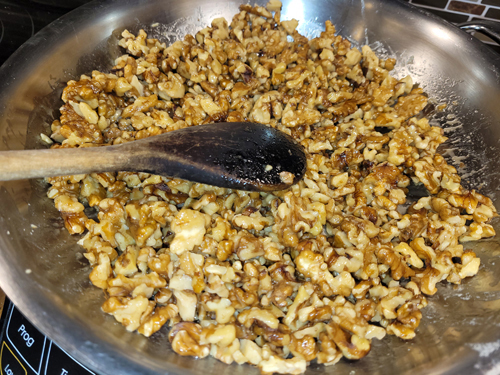

Finally, the Greek version is traditionally made with 33 phyllo sheets, representing the 33 years of Christ’s life, and has a clove in it to symbolize the cross. They also have different shapes, Greek baklava is made in square or rectangular pans, while Turkish baklava is commonly made in a circular baking dish. The clove in the Greek confection also helps hold the baklava together while it is cut. These details makes it a lot taller than the Turkish version…and provided me with many delectable stolen layers in my youth. Very few pieces of Baklava plated by me had close to 33 phyllo pastry sheets when served. Mine falls in the middle I suppose, as I am not planning to make any with 33 layers, and generally lose patience with the process at around 8-9 sheets.
Neither Greeks nor Turks originated Baklava, as much as we both would like to lay claim. The origins of baklava date to 8th century BC Assyria, In their tradition, it may be made with any of pistachios, walnuts, or almond, but is flavoured with cardamom.
The best baklava? The one your auntie or grandmother made or served, regardless of country of origin. While we did buy a lot of Baklava from Olympia Bakery, my favorite baklava was the one my Auntie Tania made, and it is her version that I am sharing here.
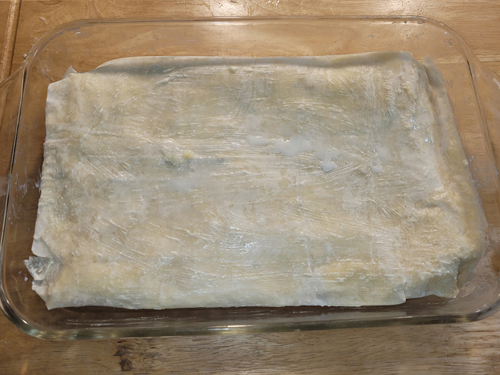
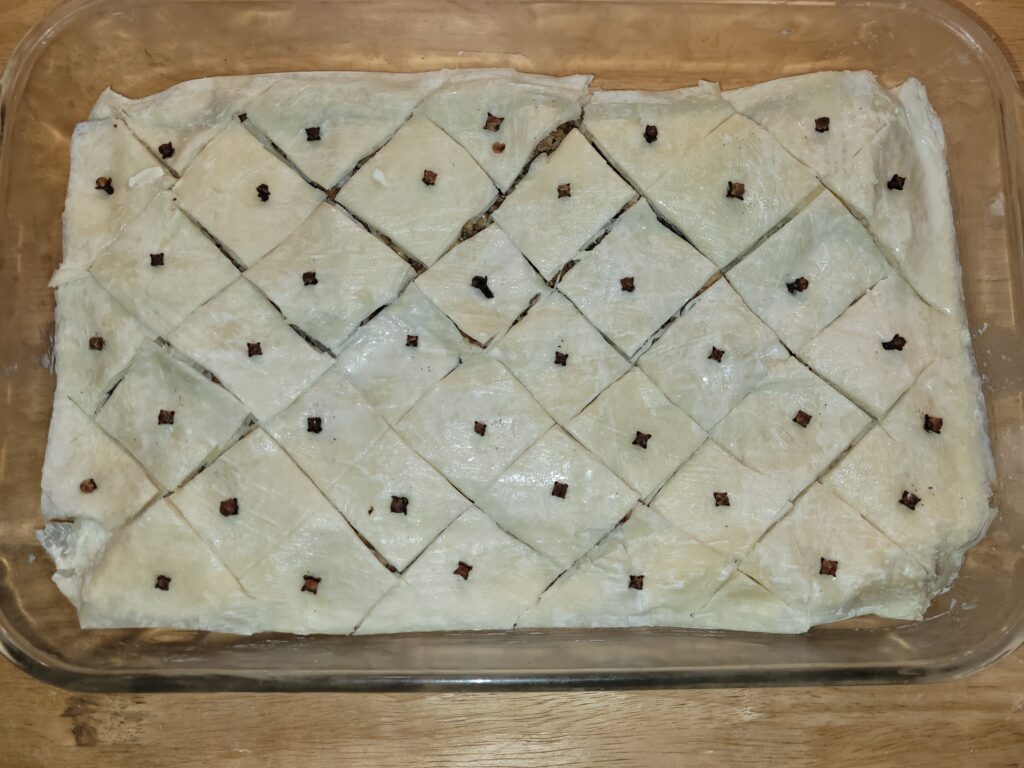
As with so many traditional recipes, there are as many Greek versions as there are Greek grandmothers (Yiayas), or Greek restaurants, so there are likely many Greek baklava recipes, and I am sure the same is true of Turkish baklava.
I like to amp my baklava up by candying the walnuts before assembly, making sure they are sticky enough not to fall out while people are eating their piece. Have not seen this in other recipes, but I promise you, it is worth doing.
In the Turkish baklava vs Greek baklava debate I fall firmly on both sides. I love them all. I am Anatolian Greek by descent, and make the Greek version as a rule, but am also fond of the many other versions of this confection. Greek and Turkish baklava are only two of the many baklava types enjoyed throughout the eastern Mediterranean, most of which are made with pistachio nuts. Eatin’s Canada already has a recipe for Lebanese Baklava at this link, and Algerian Baklawa here..
When I prepare the top layer, it is folded so that there are no rough edges on the pan. Yes, they will be cut and removed, but it is often prepared for parties and I like my baklava to arrive looking its best. It is nearly impossible to cut the layers of dough after cooking . Before it goes into the oven the baklava should be scored right through with a sharp knife, always in diamond shapes. Greek, Turkish or otherwise, most baklava is similarly cut, unless it is made in a rolled version.
When you take the hot dry baklava from the oven, the cut edges of the sheets of phyllo will be ruffled and lightly separated. When you pour the cool honey syrup over the hot baklava, the cuts will also help the syrup permeate the nut mixture. You may be tempted to taste this immediately, with the fragrance wafting up, but resist! 🙂

If you want to serve it warm on ice cream, which is a very non-traditional, but awesome way to enjoy this sweet treat, then wait at least 30 minutes. First, it takes time for the syrup to do its job, but also, hot syrup can burn your tongue and there is no fun to be had doing that. Fortunately, baklava is excellent at room temperature.
Because it is such a rich and sweet dessert, every kind of baklava is normally cut in small pieces, but don’t worry…no one in my house will judge if you have several.
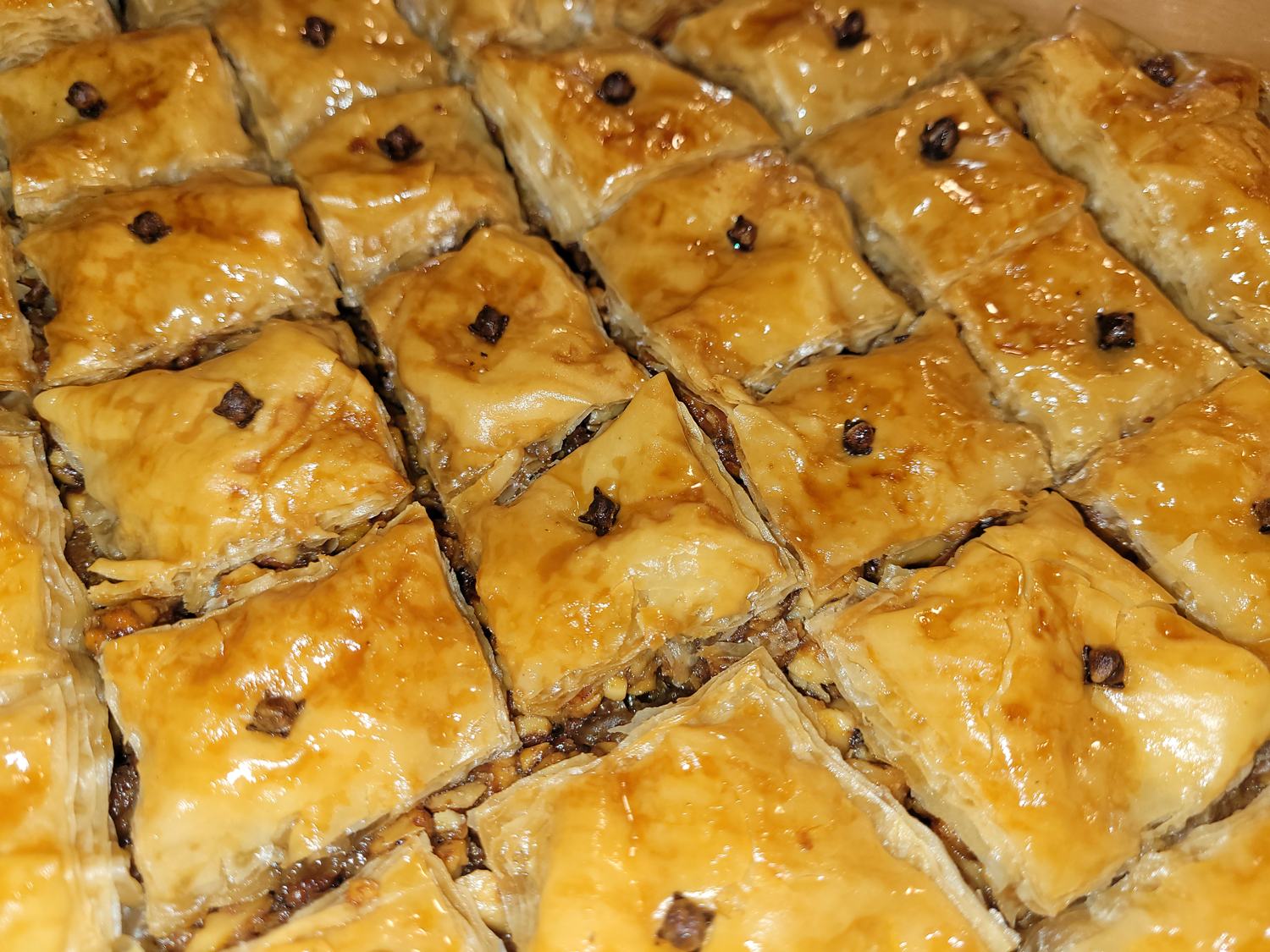
Ingredients
Filling
- 350 gr walnuts
- 50 gr butter
- 84 gr honey
- 1 ml cinnamon
Base
- 1 package filo
- 10 sheets phyllo (filo) 6-7 sheets on base 4 sheets top, folded
- 250 ml butter
Syrup
- 200 gr honey 350 grams
- 150 ml water
- 15 ml lemon juice
Instructions
- Set the oven to 350º F / 175º C
Syrup
- Blend the honey and water in a pot and cook for 20 minutes at 180º F / 82º C
- Filling
Melt the butter in a pan at medium heat
- Add the honey and cook until the two are blended, then add the walnuts
- Coat the walnuts in the honey butter mixture and cook gently until they are goey and sticky, about 5 minutes.
- Set aside
Crust/Assembly (option one)
- Lay one sheet of phyllo on a clean, dry work surface
- With a pastry brush, coat the sheet with butter and lay a second sheet onto it, overlapping to create one extra large sheet, brush this overlapped sheet also with butter
- In the centre of these two sheets, lay one sheet so that there is equal overlap on either side, coat this sheet with butter and lay another on top
- repeat until there are at least 5 full layers, and more if you like
- Lay this series of sheets into a 22cm x 33cm rectangular pan so that the single sheet on the base falls evenly on either long side of the pan
- Fill with walnuts, making sure to smooth the filling down, so that it evenly covers the base
- Fold the sides of the base over top of the filling
Covering the baklava
- Lay a fresh sheet of phyllo on your clean dry surface, and as before, layer 4 sheets with butter between them
- Fold these sheets from the outside into the center so that the edges are hidden below and place this on top
- Score the top of the baklava as you wish it to be served, cutting right through from one edge to the other
Crust/Assembly (option two: rolled)
- Lay one sheet of phyllo on a clean, dry work surface
- With a pastry brush, coat the sheet with butter
- Fold 3" of the filo up to create a small double layer along the longer axis
- Lay a line of filling along the top 1.5" of the double-layer
- Fold the bottom 1.5" of the double-layer over the walnut filling and roll upwards until the filo is all wrapped.
- Cut each roll into 5-6 equal pieces and lay them in the baking dish in even rows, seam side down
Baking
- Put the baklava into the oven, reduce the heat to 325º F / 162º C and cook for 35 minutes.
- When the baklava is removed from the oven, immediately pour the syrup over it
- Let rest for 30 minutes before serving, or serve at room temperature
Turkish Baklava

Since I don’t personally have a Turkish Baklava recipe in my repertoire, and this IS a throwdown, here is a Turkish Pistachio baklava recipe from the Turkish Style Cooking blog.

